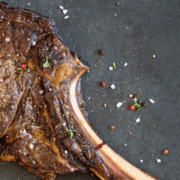Slip and fall accidents are among the most common personal injury cases, and they can happen to anyone, anywhere. These incidents often lead to personal injury claims and settlements. However, individuals’ compensation after a slip or a fall accident can vary widely depending on several factors. Understanding these factors is crucial for those involved in such incidents.
Contents
Understanding Liability
Liability, the cornerstone of slip and fall accident cases, is a legal concept around establishing who bears responsibility for the incident. Suppose someone slips and falls on a property; it’s essential to determine if the owner or occupier was negligent in keeping their premises safe. This often involves proving that the owner knew or should have known about the hazardous condition that caused the slip and fall. This liability burden squarely rests on the shoulders of the injured party (the plaintiff), who must convincingly demonstrate that the property owner or occupier failed to maintain a safe environment.
In many instances, liability hinges on the issue of foreseeability. They may be liable if a property owner or occupier could have reasonably foreseen the potential danger but failed to address it. This concept is often expressed as “They should have known better” and underscores the critical nature of evidence and arguments presented in court. Liability can be a contentious point of contention, making the legal aspect of slip-and-fall cases both intricate and significant.
Legal Representation
Get professional help with your slip-and-fall claims. It is a prudent step in slip-and-fall accident cases, particularly when grappling with the multifaceted aspects of liability, comparative negligence, and insurance disputes. An experienced personal injury attorney serves as a knowledgeable guide, navigating the intricate legal terrain and advocating on behalf of the injured party.
Legal professionals are indispensable in safeguarding the injured party’s rights and securing just compensation during negotiations and court proceedings. The need for legal representation is often expressed as “I need someone in my corner” or “Let’s get a lawyer involved.” This collaborative approach between the injured party and their attorney is instrumental in achieving a just outcome in slip-and-fall accident settlements.
Extent of Injuries
The extent of injuries sustained during a slip and fall accident is pivotal in determining the potential settlement. These injuries span a broad spectrum, from minor bruises and sprains to more severe and life-altering consequences, such as fractures or head injuries. Generally, the more influential the damages, the greater the potential for a substantial settlement.
The financial component of the settlement equation revolves around medical expenses, treatment costs, and ongoing healthcare needs. When these are substantial, it invariably increases the overall settlement amount. Moreover, the non-financial aspects come into play as well. Pain and suffering, emotional distress, and the long-term impact on the victim’s quality of life are also considered during settlement negotiations. These intangible factors can significantly affect the final compensation package, illustrating that slip and fall cases extend beyond the physical realm.
Insurance Coverage
The presence and terms of insurance coverage can significantly influence slip and fall accident settlements. It’s a common practice for property owners and occupiers to carry liability insurance as a reliable financial safety net to cover any accidents on their premises. These insurance policies come with varying policy limits, and the specific terms and conditions can significantly impact the available settlement amount.
Sometimes, insurance companies may resist paying the total amount, leading to challenging negotiations. Expressions such as “They’re trying to lowball us” or “We need to push for a fair settlement” often encapsulate the tension that can arise in these discussions. It’s essential for all parties involved to have a clear understanding of the insurance coverage and the legal implications it carries.
Evidence and Documentation
Building a strong case in a slip-and-fall accident lawsuit necessitates collecting and presenting solid evidence and documentation. This comprehensive approach includes capturing photographs of the accident scene highlighting any hazards or defects that contributed to the fall. Medical records detailing the injuries sustained are vital, along with witness statements and incident reports that offer a well-rounded perspective of the event.
Well-documented cases invariably stand a better chance of securing a favourable settlement. The evidence and documentation are the foundation for arguments, helping establish liability and the extent of injuries. In this context, the commonly used expressions “Having all your ducks in a row” or “The more evidence, the better” vividly portray the significance of meticulous preparation.
Comparative Negligence
In some slip-and-fall cases, the injured party and the property owner or occupier may share some fault. This legal concept, comparative negligence, can substantially affect the final settlement amount. The percentage of fault assigned to each party plays a pivotal role in this calculation. In certain jurisdictions, if the injured party is deemed more than 50% responsible for the accident, they may not be eligible for any compensation.
Discussions about comparative negligence often involve phrases such as “They’re saying I’m partly to blame” or “I didn’t think I’d be held responsible at all.” These expressions encapsulate the complexities and potential challenges that can arise when multiple parties share liability for a slip and fall incident. As such, understanding the intricacies of comparative negligence is essential in gauging the potential outcome of a case.
Conclusion
Slip and fall accidents can lead to unexpected injuries and financial burdens. The factors influencing the settlements in these cases are multifaceted, ranging from liability and the extent of injuries to insurance coverage, evidence, and legal representation. Understanding these factors is essential for individuals seeking fair compensation for their injuries. Remember, every accident is unique, so it’s crucial to consult with a legal expert to navigate the complexities of your specific case.
Read Also:












